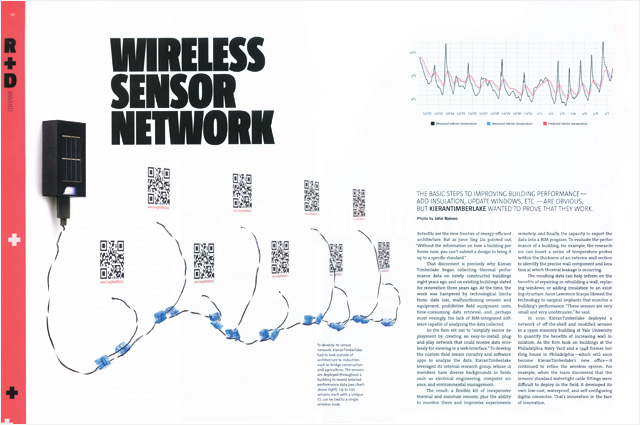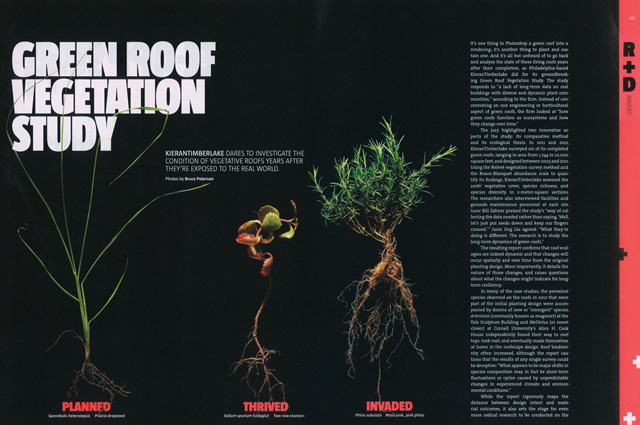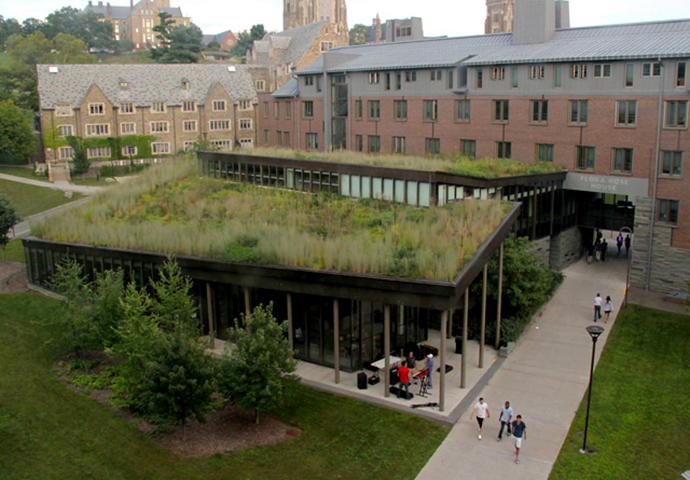2013 R+D Award Winners Announced
Architect Magazine announced today that two of our projects, the Wireless Sensor Network and the Green Roof Vegetation Study, won 2013 R+D Awards. They are featured in the magazine's July issue along with six other winning projects deemed exceptional by jurors Jing Liu, Lawrence Scarpa, FAIA, and Bill Zahner, Hon. AIA. Now in its seventh year, the R+D Awards program celebrates exploration and innovation in architecture.
2013 R+D Awards Winner: Wireless Sensor Network
By Gideon Fink Shapiro
The basic steps to improving building performance—add insulation, update windows, etc.—are obvious, but KieranTimberlake wanted to prove that they work.
Retrofits are the new frontier of energy-efficient architecture. But as juror Jing Liu pointed out, “Without the information on how a building performs now, you can't submit a design to bring it up to a specific standard.”
That disconnect is precisely why KieranTimberlake began collecting thermal performance data on newly constructed buildings eight years ago, and on existing buildings slated for renovation three years ago. At the time, the work was hampered by technological limitations: data loss, malfunctioning sensors and equipment, prohibitive field equipment costs, time-consuming data retrieval, and, perhaps most vexingly, the lack of BIM-integrated software capable of analyzing the data collected.
Continue reading
2013 R+D Awards Winner: Green Roof Vegetation Study
By Gideon Fink Shapiro
KieranTimberlake dares to investigate the condition of vegetative roofs years after they're exposed to the real world.
It's one thing to Photoshop a green roof into a rendering; it's another thing to plant and sustain one. And it's all but unheard of to go back and analyze the state of these living roofs years after their completion, as Philadelphia-based KieranTimberlake did for its groundbreaking Green Roof Vegetation Study. The study responds to “a lack of long-term data on real buildings with diverse and dynamic plant communities,” according to the firm. Instead of concentrating on one engineering or horticultural aspect of green roofs, the firm looked at “how green roofs function as ecosystems and how they change over time.”
Continue reading






